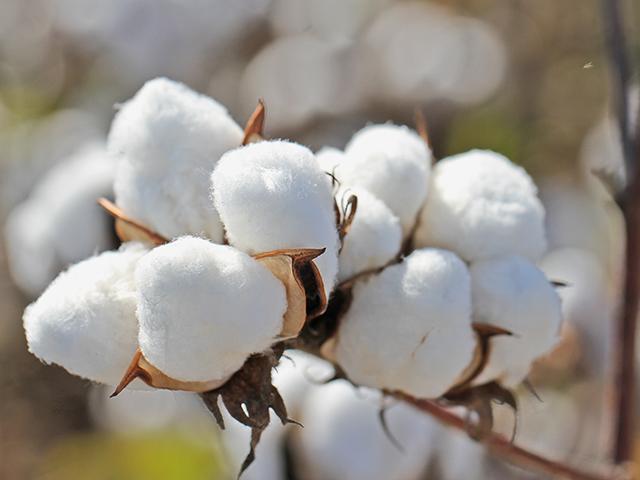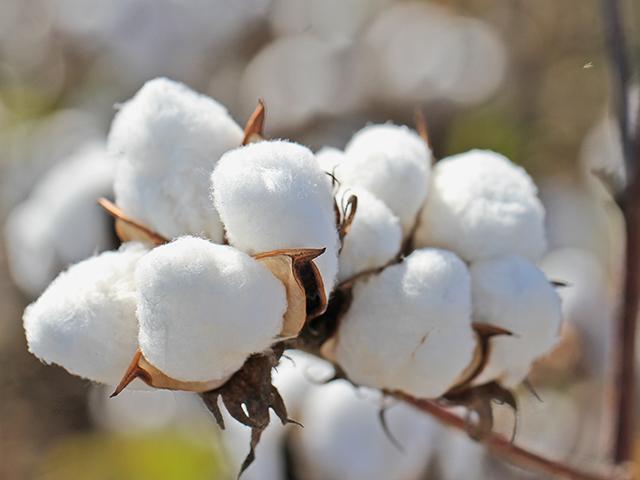Production Blog
Cotton Farmers Face Difficult Planting Decisions
Cotton producers intend to plant 9.8 million cotton acres this spring, down 3.7% from 2023, according to the National Cotton Council's (NCC) 43rd Annual Early Season Planting Intentions Survey.
Upland cotton intentions are 9.6 million acres, down 4.3% from 2023, while extra-long staple (ELS) intentions of 202,000 acres represent a 37.7% increase. The survey results were announced during the 2024 National Cotton Council Annual Meeting on Feb. 18. It polled farmers across the 17-state Cotton Belt about planting intentions from mid-December 2023 through mid-January 2024.
Since the survey period, cotton prices have increased while corn and soybean prices have declined further. The change in the price ratios could result in higher cotton acreage than reported on the NCC survey.
DTN Lead Analyst Todd Hultman said with USDA estimating hard red winter wheat (HRW) plantings of 1.7 million fewer acres than a year ago and sorghum plantings up 900,000 acres from 2023, there is room for a modest increase in cotton acres in the southwestern Plains in the spring of 2024.
"Whether farmers choose to plant more cotton remains to be seen. Between the NCC survey of 9.8 million acres and USDA's early estimate of 11.0 million acres, I lean toward the NCC number for now as new-crop cotton prices are not very enticing," Hultman said. USDA will update its cotton planting estimate in the Prospective Plantings report on March 28.
P[L1] D[0x0] M[300x250] OOP[F] ADUNIT[] T[]
The NCC report used 10-year average abandonment rates and a few state-level adjustments to account for current moisture conditions. That puts the Cotton Belt harvested area at 8.1 million acres for 2024 with a U.S. abandonment rate of 17.9%. Using the five-year average yield for the Southeast and the Midsouth -- and the 10-year average yield for the Southwest and the West -- generates a cotton crop of 14.6 million bales with 14.0 million upland bales and 538,000 ELS bales.
Regarding the planting intentions survey, Jody Campiche, NCC vice president, economics and policy analysis, noted growers face difficult planting decisions as current prices fall short of production costs for many producers.
"History has shown that U.S. farmers respond to relative prices when making planting decisions," Campiche observed. "As compared to average futures prices during the first quarter of 2023, all commodity prices were lower during the survey period, but cotton had the smallest decline. As a result, the price ratios of cotton to corn and soybeans were higher than in 2023. Based on historical price relationships, this would generally suggest an increase in cotton acreage. However, the 2024 crop year could go against that relationship due to high production costs relative to current prices."
Southeast respondents indicate a 4.8% decline in cotton acreage to 2.1 million acres. Midsouth growers intend to plant 1.6 million acres, a decline of 2.4% from the previous year. Southwest growers expect to plant 5.2% less cotton. In the West, upland cotton acreage is expected to increase by 21.5%, with the bulk coming in California. ELS acreage increases showed significant bumps in Arizona, California and Texas.
ELS acreage is expected to increase by 37.7% in 2024. Arizona growers expect to plant 14.3% more ELS cotton, while California growers expect to plant 62.2% more. More normal weather conditions are expected to play a role in the increased acreage as excessively wet conditions in 2023 prevented some acres from being planted. New Mexico ELS cotton acreage is expected to decline by 42.1%, while Texas growers expect to plant 22.0% more ELS cotton. Overall, U.S. cotton growers intend to plant 202,000 ELS acres in 2024.
Weather and economic outlook will also influence planting acres. In her analysis, Campiche observed that given significant uncertainty in the global economy, "this past year can be characterized as a year when an anticipated recovery in cotton demand has been slow to materialize."
"Weak demand has translated to pressures throughout the supply chain. The outlook for the world cotton market will, in part, be determined by continued expansion in economic activity. Modest economic growth is projected for the next two years, but the projected growth rates are still well below the recent historical average," she said.
Find complete state-by-state details and more analysis find the National Cotton Council's survey at https://www.cotton.org/…
Additional details of the 2024 Cotton Economic Outlook are on the NCC's website at http://www.cotton.org/…
Pamela Smith can be reached at pamela.smith@dtn.com
Follow her on X, formerly Twitter, @PamSmithDTN
(c) Copyright 2024 DTN, LLC. All rights reserved.





Comments
To comment, please Log In or Join our Community .